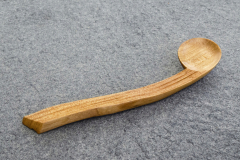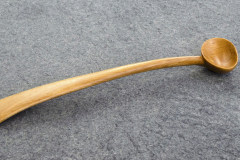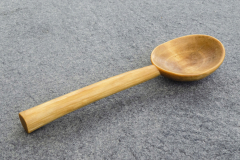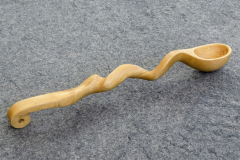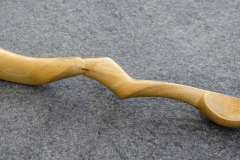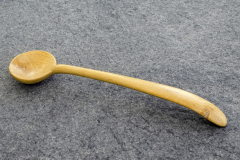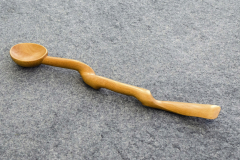
Introduction: Carving tiny wooden cutlery began with a stanley knife, grand daughters and tales of fairies. This developed into a real interest in greenwood carving and the traditional craft of carving wooden spoons. It is an absorbing practice involving the acquisition of new skills, knowledge and techniques. For more about this journey click here
I have been making spoons for a decade now and really enjoy this formal exercise in which the shapes evolve through the relationship between the wood, tools and my hands. I don’t make batches of identical spoons, but approach each piece of wood with an open mind: although there are themes that recur. The spoons are improvised rather than planned and always surprise me. It is a form of three dimensional doodling, or problem solving, as each spoon’s bowl, neck and stem require new resolutions for every new piece of wood.

Below are some of my more recent spoons.
Below are some earlier examples of my spoons.
Developing skills and acquiring knowledge: I recorded a more comprehensive record of my spoon carving journey on Adobe Spark. At the time I was intrigued to note that my own natural learning pattern did not resemble the learning models that I had been advocating as a school art adviser. click here
Examples of other’s spoons: There are lots of ideas and examples on Pinterest. Here are some of my favourites.
Dibbers: Recently I found I needed a ‘dibber’ for gardening and, of course, I found a piece of wood and started whittling. This led to a succession of esoteric dibbers carved for friends and some to be sold for charity. Dibbers are even more open ended than spoons and I love the absurdity of carving just for the fun of it when, in practice, any old pencil would do. But gardeners develop an affection for curious bits of wood.



